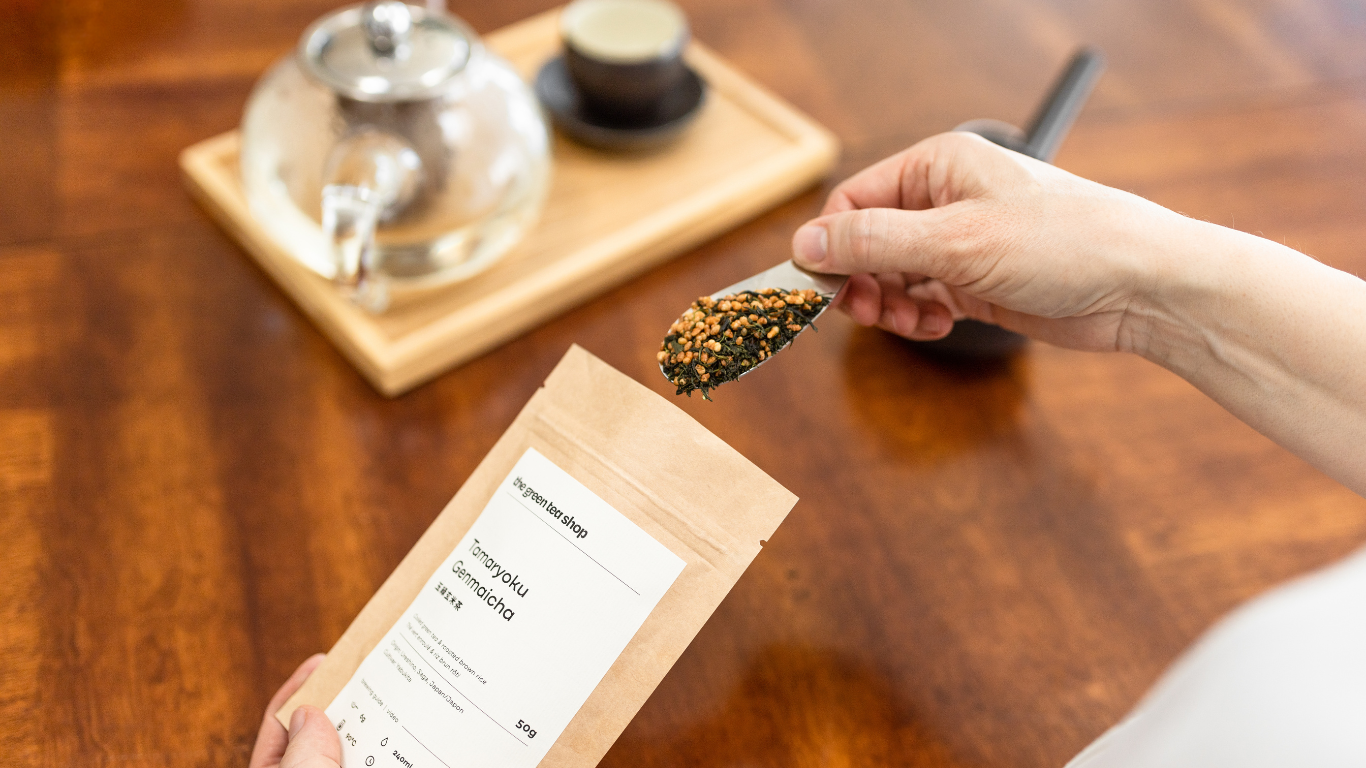As a cherished staple in Japanese tea culture, Genmaicha—often dubbed the “people's tea”—has long been celebrated for its harmonious blend of green tea and roasted brown rice. Today, it’s enjoyed across all demographics in Japan and around the world, prized not only for its toasty, comforting flavour but also for its nostalgic connection to Japanese history, tradition, and ingenuity.

A Rich History Steeped in Sustainability
Genmaicha (玄米茶), which translates to “brown rice tea,” has humble roots stretching back to the early 20th century. Like many great things in Japanese culinary culture, its origin is grounded in simplicity, practicality, and a deep respect for minimizing waste. Several fascinating origin stories surround this iconic blend—each reflecting a different aspect of Japanese life and values.
1. The Kyoto Tea Merchant and the Spirit of “No Waste”
One widely shared theory places the birth of Genmaicha in early Showa-era (around 1926-1935) Kyoto, a city deeply rooted in the philosophy of shimatsu no bunka (始末の文化)—a culture of using ingredients fully and respectfully. As the story goes, a local tea merchant, after observing leftover fragments of kagami mochi (rice cakes from the New Year’s celebration), wondered: “Is there a way to make good use of this?”
That simple question is believed to have sparked the creation of Genmaicha—a tea that not only warmed the body but honoured the principle of sustainability.
2. Kaiseki Roots and the Power of Simplicity
Another origin theory links Genmaicha to the elegant world of kaiseki ryōri (懐石料理), a traditional multi-course cuisine. During the late Taisho to early Showa period (around 1921-1935), it was customary to finish a kaiseki meal by pouring hot water over okoge—the crispy rice at the bottom of the pot—to create a soothing drink. Some believe that this humble practice of rice and hot water gradually evolved into the pairing of roasted brown rice and green tea.
3. A Practical Brew for Hard Times
Genmaicha was also a product of necessity. By mixing roasted brown rice into green tea, tea merchants could stretch their supply and offer an affordable beverage to working-class families. This blend became especially popular during wartime and post-war Japan, when tea leaves were scarce and economic hardship was widespread.
In this way, Genmaicha earned its reputation as “the people’s tea”—a comforting, nourishing drink that made the best of limited resources.

What Makes Genmaicha Unique?
Traditionally, Genmaicha was made with bancha, a budget-friendly tea that's made from the third or fourth flush of tea. But as popularity has surged in recent years, tea makers have elevated the blend by using sencha or even gyokuro, resulting in higher-quality versions with richer flavour and aroma.
(Fun fact: At our shop, we use first flush tamaryokucha—a special coiled green tea from Ureshino, Saga)
How Is Genmaicha Made?
Most Genmaicha follows a classic 1:1 ratio of roasted brown rice to tea leaves, but there’s plenty of variation. Some blends go heavier on the rice for a nuttier, toastier taste, while others use more tea to boost complexity and caffeine.
You may notice small popcorn-like pieces in some Genmaicha—that’s rice that has popped during roasting. These fluffy bits are mostly for visual charm. The real flavour comes from the evenly roasted, golden-brown grains, which are considered the sign of a high-quality blend.
Caffeine Content: Easy on the Buzz
Thanks to the roasted rice content (which contains no caffeine), Genmaicha is naturally lower in caffeine—about 10 mg per 100 ml, roughly half the amount in a standard cup of sencha. It’s the perfect tea for mellow mornings or cozy evening sipping.

Source: Standard Tables of Food Composition in Japan 2015 (Seventh Revised Edition)
Final Thoughts: A Toast to Tradition
Genmaicha is more than just a blend of tea and rice—it’s a reflection of Japanese history, resourcefulness, and the beauty of everyday rituals.
Are you sipping Genmaicha today?
